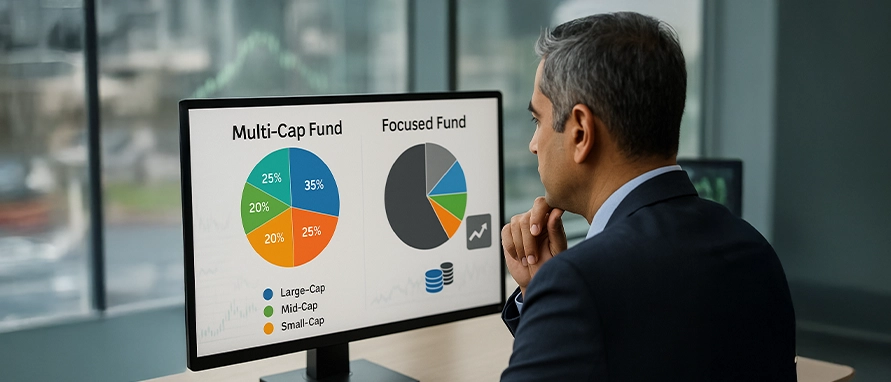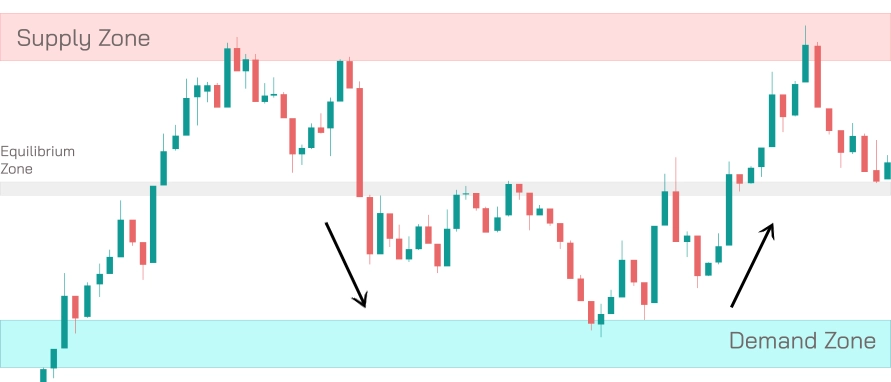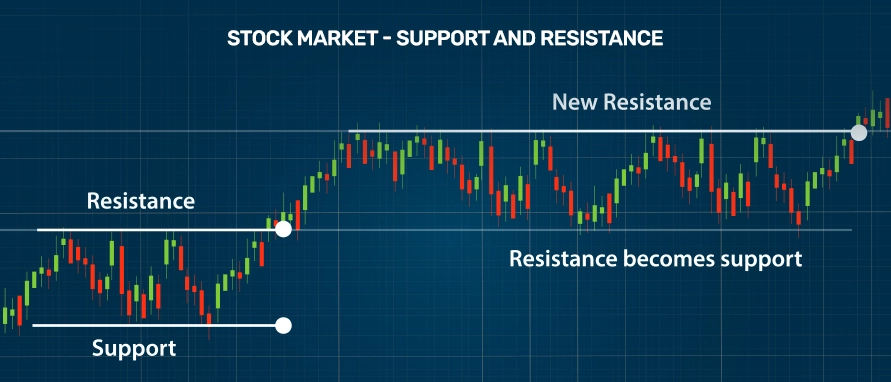-
Our ProductsLoansCardsInsuranceInvestmentsStock MarketElectronics MallCIBIL ScoreKnowledge CentreAcademyCalculators
- Our Services
- My Account
- Discover
Savings vs Investing: What Should You Know?
What Is Saving?
Discover the concept of saving, why it’s important, and how it works in your personal finance strategy.
Saving refers to the practice of setting aside a portion of your income for future use, typically for short-term goals or emergencies. It is usually placed in low-risk, easily accessible accounts, like savings accounts, fixed deposits, or money market funds. The main objective of saving is to create a financial cushion that can be accessed quickly in case of an emergency, without the risk of losing the principal amount.
The characteristics of saving are low risk and high liquidity, meaning you can withdraw or use the funds at any time. However, the returns on savings are usually modest, as they tend to be limited to interest paid by banks or financial institutions. While saving offers financial security, it typically doesn’t keep pace with inflation, which can erode the purchasing power of your funds over time.
What Is Investing?
Understand how investing works, the various types of assets involved, and the potential for growth compared to saving.
Investing involves using your money to purchase assets such as stocks, bonds, real estate, or mutual funds with the goal of earning returns over time. Unlike saving, investing is inherently riskier, as the value of your investments can fluctuate due to market conditions. While the potential for returns is higher than in savings, so too is the possibility of losses.
Investing is typically intended for long-term growth, allowing your wealth to grow over time through the appreciation of assets or through income generation, such as dividends from stocks or interest from bonds. In contrast to savings, investing requires a longer time horizon, as it often takes years for investments to generate significant returns.
Key Differences Between Saving and Investing
Compare and contrast the core differences between saving and investing, including time horizons, risks, returns, and liquidity.
| Aspect | Saving | Investing |
|---|---|---|
| Time Horizon |
Short-term (immediate needs) |
Long-term (growth and returns) |
| Risk |
Low risk |
Higher risk (fluctuating returns) |
| Returns |
Low returns (interest) |
Potential for higher returns (capital gains, dividends) |
| Liquidity |
High liquidity (easily accessible) |
Low liquidity (investments may take time to sell) |
| Goals |
Safety, emergency funds, short-term goals |
Growth, wealth accumulation, long-term goals |
The key differences between saving and investing can be seen in several aspects, including:
Time Horizon: Saving is typically for short-term goals, such as an emergency fund or a big purchase. Investing is for long-term goals like retirement or wealth accumulation.
Risk: Saving offers minimal risk, whereas investing involves a higher degree of risk, as the value of investments can rise or fall.
Returns: Savings usually provide lower returns, while investments offer the potential for higher returns over the long term.
- Liquidity: Savings are easily accessible, whereas investments may require more time to sell or convert into cash.
How to Use Savings & Investing Together
Explore how savings can address short-term needs while investments may support potential long-term financial growth objectives.
Emergency Fund: Funds kept aside for a few months’ expenses for unforeseen events.
Saving First: Savings generally provide liquidity for urgent requirements like medical expenses or sudden income loss.
Investing After Saving: After building savings, individuals may consider investments for potential long-term growth.
Balance Strategy:
Save for short-term stability
Invest for long-term wealth accumulation
Diversification: Different investment vehicles, such as stocks, bonds, and mutual funds, can help diversify exposure and manage risk.
Examples of Saving and Investing
See real-life examples that highlight the benefits and drawbacks of saving and investing in different scenarios.
Consider the example of inflation eroding the value of savings. If you keep ₹1,00,000 in a savings account with an interest rate of 3% per year, but the inflation rate is 4%, the real value of your savings will decrease over time. The interest you earn is not enough to keep up with rising prices, meaning your purchasing power is reduced.
Now, compare this with investing in equities. Over a 10- or 20-year period, a diversified stock portfolio has historically outperformed savings accounts in terms of returns. For example, the average annual return of the Indian stock market has been around 12% over long periods, which is significantly higher than the returns offered by savings accounts. However, this comes with the risk of market fluctuations and the need for long-term commitment to ride out the ups and downs of the market.
Conclusion
Both saving and investing are essential components of a well-rounded personal finance strategy. Saving provides a secure, liquid foundation that ensures financial stability in the short term, while investing helps build wealth for long-term goals. It’s important to find the right balance between the two based on your individual needs, goals, and risk tolerance. By using savings to protect your immediate financial well-being and investing for future growth, you can create a more secure and prosperous financial future.
Disclaimer
This content is for informational purposes only and the same should not be construed as investment advice. Bajaj Finserv Direct Limited shall not be liable or responsible for any investment decision that you may take based on this content.
FAQs
Can savings perform differently compared to investments over time?
Savings provide safety and liquidity, while investments may experience fluctuating returns and potential long-term growth, depending on market conditions.
What factors influence the balance between savings and investments?
The balance varies based on financial goals, risk tolerance, and time horizon. Many individuals maintain an emergency fund and then allocate remaining funds according to their preferences and long-term objectives.
How do savings accounts differ from brokerage accounts?
Savings accounts provide liquidity and lower risk for short-term goals and emergencies. Brokerage accounts are typically used for long-term investing in assets like stocks, bonds, and mutual funds, involving higher risk.
With a Postgraduate degree in Global Financial Markets from the Bombay Stock Exchange Institute, Nupur has over 8 years of experience in the financial markets, specializing in investments, stock market operations, and project management. She has contributed to process improvements, cross-functional initiatives & content development across investment products. She bridges investment strategy with execution, blending content insight, operational efficiency, and collaborative execution to deliver impactful outcomes.
Related Blogs

Anshika

Nupur Wankhede

Nupur Wankhede

Anshika

Nupur Wankhede

Anshika

Geetanjali Lachke

Roshani Ballal

Roshani Ballal

Anshika

Anshika

Nupur Wankhede

Anshika

Nupur Wankhede

Nupur Wankhede

Geetanjali Lachke

Roshani Ballal

Roshani Ballal

Geetanjali Lachke

Geetanjali Lachke

Nupur Wankhede

Anshika

Nupur Wankhede

Nupur Wankhede

Nupur Wankhede

Nupur Wankhede

Nupur Wankhede

Nupur Wankhede

Nupur Wankhede

Geetanjali Lachke

Geetanjali Lachke

Roshani Ballal

Nupur Wankhede

Anshika

Anshika

Nupur Wankhede

Nupur Wankhede

Nupur Wankhede

Nupur Wankhede

Nupur Wankhede

Nupur Wankhede

Nupur Wankhede

Nupur Wankhede

Nupur Wankhede

Nupur Wankhede

Nupur Wankhede

Nupur Wankhede

Roshani Ballal

Anshika

Nupur Wankhede

Geetanjali Lachke

Nupur Wankhede

Nupur Wankhede

Anshika

Anshika

Nupur Wankhede

Anshika

Anshika

Nupur Wankhede
.webp)
Nupur Wankhede

Nupur Wankhede

Nupur Wankhede

Nupur Wankhede

Nupur Wankhede

Nupur Wankhede
.webp)
Nupur Wankhede

Nupur Wankhede

Nupur Wankhede

Nupur Wankhede
-in-India.webp)
Nupur Wankhede

Nupur Wankhede

Nupur Wankhede

Anshika

Nupur Wankhede

Nupur Wankhede

Anshika

Anshika

Nupur Wankhede

Nupur Wankhede

Nupur Wankhede

Nupur Wankhede

Nupur Wankhede

Nupur Wankhede

Nupur Wankhede

Nupur Wankhede

Anshika

Nupur Wankhede

Nupur Wankhede

Nupur Wankhede

Nupur Wankhede

Anshika

Nupur Wankhede

Nupur Wankhede
-Meaning-Importance.webp)
Nupur Wankhede

Anshika

Nupur Wankhede

Anshika

Nupur Wankhede

Nupur Wankhede

Nupur Wankhede

Geetanjali Lachke

Geetanjali Lachke

Geetanjali Lachke

Anshika

Anshika

Nupur Wankhede

Nupur Wankhede
-portfolio.webp)
Nupur Wankhede

Anshika

Roshani Ballal

Geetanjali Lachke

Geetanjali Lachke

Geetanjali Lachke

Geetanjali Lachke

Geetanjali Lachke

Roshani Ballal

Roshani Ballal

Geetanjali Lachke

Geetanjali Lachke

Geetanjali Lachke

Roshani Ballal

Roshani Ballal

Geetanjali Lachke

Roshani Ballal

Roshani Ballal

Roshani Ballal

Roshani Ballal

Roshani Ballal

Roshani Ballal

Roshani Ballal

Roshani Ballal

Roshani Ballal








.webp)

.webp)






































































.webp)



.webp)












.webp)




.webp)




































